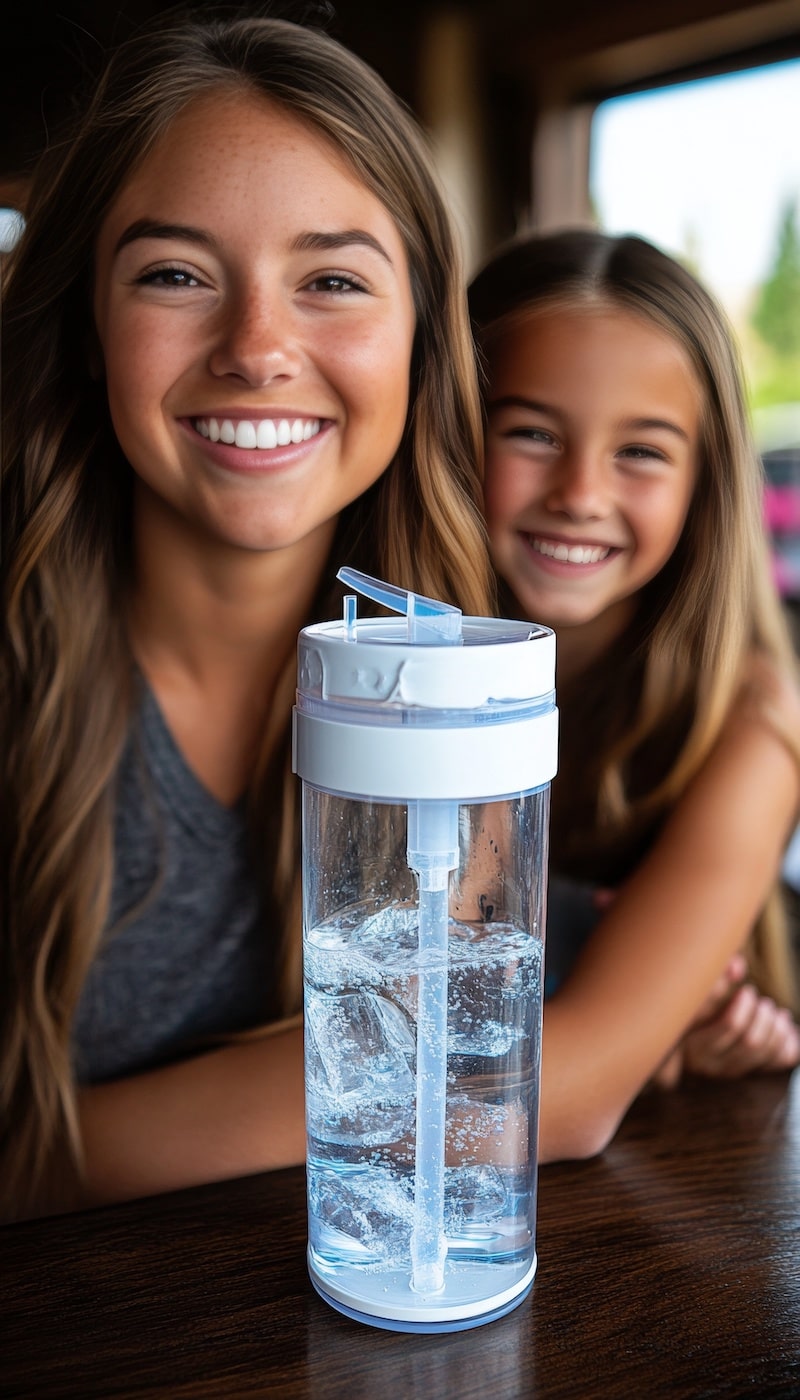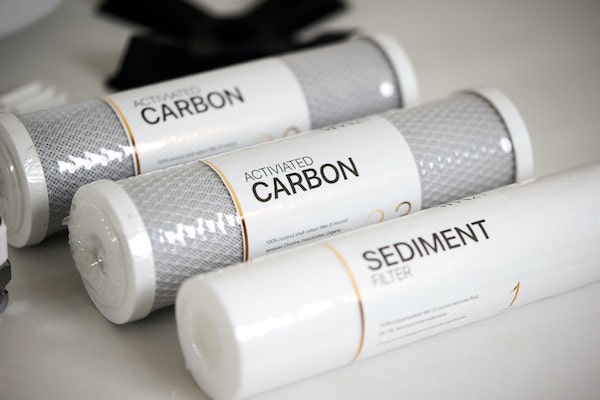Autoship & Save
Automated
Your second shipment of your RO System Autoship automatically swap into its pre-filter set.
Savings
Always 15% off on Autoship filters.
Convenience
Always have clean and healthy water for your entire family.
Control
Skip, delay, get it sooner, or cancel anytime. You are in full control.


VIVA21 Reverse Osmosis Water Filtration System
The VIVA21 RO system delivers crisp, pure water straight from your tap—removing up to 99% of harmful contaminants while keeping every sip fresh and healthy. Designed for convenience, reliability, and long-term savings, it’s the smarter way to protect your family with clean water every day.

Premium High Capacity Stage 1-3 Pre-Filter Set
Keep your reverse osmosis system running at peak performance with our Pre-Filter Replacement Set, guaranteed 1 year capacity. Designed to capture sediment, chlorine, and other impurities early, it extends the life of your reverse osmosis system while ensuring cleaner, safer water.
Blog posts
How to Install an Undersink Reverse Osmosis (RO) System—A Simple, Step-by-Step Guide
If you’re ready to take clean, healthy drinking water into your own hands, installing an undersink Reverse Osmosis (RO) system is a smart and achievable DIY project. With a little planning and the right tools, you’ll enjoy crisp, purified water in no time—without needing a plumber or paying extra. Let's walk through the installation process together, clearly and confidently. 1. Choose the Right System—and Gather Your Tools Not all RO systems are created equal. Here’s what to look for: Certification: NSF/ANSI 58 ensures the system reduces common contaminants effectively. Features: Consider whether you want a remineralization filter, a high-efficiency design, or a smart monitoring system. Space and Specs: Make sure the under-sink space fits the tank and filters. Tools you’ll need: Adjustable wrench Phillips and flat-head screwdrivers Drill (if you need to install a new faucet hole) Teflon tape (plumbers’ tape) Bucket or towel (for water spills) 2. Shut Off, Prep, and Position Turn off the cold-water supply under your sink. Open the existing faucet to relieve pressure and drain residual water. Plan where the system parts will go: A spot for the RO faucet (usually on your countertop) The filtration stack (pre-filters, membrane, post-filter) The storage tank (below, in a corner) 3. Install Pre-Filters and Membrane Follow manufacturer instructions—most systems use twist-off cartridge filters. Sequence matters: Sediment filter Carbon pre-filter RO membrane Post-filter (polisher) Optional remineralization filter Make sure each filter snaps or screws in securely with no leaks. 4. Mount the RO Faucet If needed, drill a hole in your countertop or sink (usually ⅝″ or ⅞″). Secure the faucet with its provided hardware and tighten firmly—but gently. Route the faucet tubing through the hole toward your filters. 5. Connect the Storage Tank Locate a stable area below the sink. Wrap the tank valve threads with Teflon tape. Screw the tank into place and connect its tubing to the RO system. 6. Set Up the Drain Line Find a high point on the drain pipe (above the P-trap). Drill a small pilot hole, then install the drain saddle clamp. Secure the tubing from the RO unit into the saddle—no leaks allowed! 7. Pressurize, Flush, and Check Turn the cold-water valve back on. The system fills, pushing clean water into the tank and waste to the drain. Flush the system once it’s full—typically a few tanks-worth of water for best taste. Inspect for leaks—check every connection, fitting, and joint. 8. Test and Fine-Tune Wait roughly 24 hours for the tank to fully fill. Use a TDS (Total Dissolved Solids) meter to test the water. Expect significant reduction—your readings from raw to post-RO should drop noticeably. If something’s off—low flow? Strange taste?—recheck filters, connections, and pressure. 9. What You Can Do Now Set up reminders (phone or calendar) for filter replacements. Mark your calendar for membrane replacement every 2–5 years, depending on water quality. Optionally, clean and sanitize your storage tank once a year. Keep your TDS meter handy and test periodically to ensure consistent performance. Final Thoughts Installing an undersink RO system doesn’t have to be intimidating. With the right setup, tools, and a little persistence, you’ll have clean, delicious water flowing from your kitchen in just a few hours. Not only will you save money on bottled water—but you’ll gain peace of mind and a hands-on understanding of your filtration system. Enjoy every crystal-clear sip, one confident step at a time.
Learn moreMaintaining Your Reverse Osmosis System: How to Maximize Filter Life and Water Quality
One of the greatest methods to make sure your family always gets clean, safe drinking water at home is to use a reverse osmosis (RO) system. But the truth is that once you install a RO system, it doesn't just "run forever." If you don't change the filters on time or undertake regular maintenance, the water quality gets worse, the filters get clogged, and the whole system can break down. The good news is? It's easier than you think to keep your RO system in good shape. The reward is years of great-tasting, reliable water for a fraction of the expense of bottled water. In this article, we'll talk about why maintenance is important, which parts need it, how often to change them, and the best ways to make your RO system last longer. 1. Why RO Maintenance Matters Your RO system works quietly under the sink, day and night. But it’s not a “set it and forget it” appliance. Neglecting it can have real consequences: Water quality risks: Filters eventually saturate. Once full, they let impurities slip through—so your water may no longer be as safe as you think. Shortened lifespan: Pre-filters protect the RO membrane. If you skip changes, the membrane clogs or fouls, often years before its expected life. Higher costs: A new filter set costs far less than replacing a ruined membrane—or the whole system. Think of it like your car: oil changes prevent breakdowns. Regular maintenance does the same for your RO system. 2. Get to Know Your RO System Understanding how the system works makes maintenance a whole lot easier. Here are the key players: Sediment Pre-filter: Blocks dirt, sand, and rust before they reach delicate parts. Carbon Pre-filter: Removes chlorine and chemicals that can damage the RO membrane. RO Membrane: The heart of the system, removing dissolved solids, heavy metals, nitrates, fluoride, and PFAS. Post-carbon “polishing” filter: Improves taste and odor before the water hits your glass. Optional remineralization filter: Restores calcium and magnesium for better taste. Storage tank: Holds purified water until you need it. Each stage has its own lifespan—and your job is simply to swap them out before they expire. 3. The Filter Replacement Schedule Most manufacturers recommend: Sediment filter: every 6–12 months Carbon pre-filter: every 6–12 months RO membrane: every 2–3 years (sometimes 5 with soft water) Post-carbon filter: every 6–12 months Remineralization filter: annually A simple phone reminder or calendar note keeps you on track. Skipping just one cycle can clog the system and shorten the membrane’s life. 4. Warning Signs Your System Needs Attention Even with schedules in place, real-world use may wear filters out faster. Watch for: Slower flow: A dribble instead of steady flow means clogs somewhere. Bad taste or smell: Chlorine, metallic notes, or “mustiness” often signal exhausted filters. High TDS readings: Use a TDS meter—if readings climb above ~50 ppm (vs. the usual 20–30 ppm), it’s time for replacements. Constant draining or odd noises: Can point to pressure or clogging issues. Catching these early saves money and ensures you don’t drink compromised water. 5. Annual and Biannual Tasks Beyond Filters Maintenance isn’t only about swapping cartridges. A few extra steps keep your system healthy: Sanitize the storage tank once a year to prevent bacterial buildup. Check tank pressure (should be 7–8 psi when empty) to keep storage capacity up. Inspect tubing and fittings—loose parts can leak. Flush the system (many include a flush valve) to keep the membrane clean. Think of this as your “deep clean” for long-term reliability. 6. DIY Care vs. Professional Service You have two good options: DIY maintenance: Modern RO systems make cartridge changes simple with twist-and-lock designs. It’s cheaper and gives you control. Professional servicing: Annual contracts or a one-time technician can handle full sanitization, membrane testing, and troubleshooting. Ideal if you’re short on time or not comfortable with plumbing. 7. Myths About RO Maintenance A few common misconceptions get people into trouble: “Good taste = good water.” Wrong. Some contaminants have no taste, smell, or color. “The membrane lasts forever.” False. Without pre-filters, membranes can clog in less than a year. “If I change filters, I don’t need to clean the tank.” Not true—bacteria can grow inside tubing and storage. “RO systems waste too much water.” Modern high-efficiency systems waste far less than older units. Knowing what’s fact vs. fiction keeps your system performing. 8. The True Cost of Neglect vs. Care Let’s compare two households: Household A (Neglect): Skips filter changes for 3 years. The membrane fouls, repairs cost $600–$800, and total 10-year expenses exceed $1,500. Household B (Proper Maintenance): Stays on schedule, spends about $250/year. The membrane lasts 5 years, and the system runs efficiently. Over 10 years: ~$750 total—half as much, with better water quality. The lesson is clear: preventive care saves money. 9. Tools and Tips to Make Maintenance Easier TDS meters: Cheap, quick, and accurate. Smart alerts: Some modern systems use LEDs or phone apps to remind you when filters need changing. Filter subscription kits: Auto-delivery means you never forget. These tools turn “remembering” into “automatic.” 10. What You Can Do Now Don’t wait until water tastes off or the flow slows to a trickle. Take these steps today: Check your system’s manual for replacement intervals. Buy a TDS meter if you don’t already have one. Mark calendar or phone reminders for filter changes. Sanitize your tank at your next filter change. If your RO system is over 10 years old, consider upgrading—newer units are more efficient and easier to maintain. Final Thoughts One of the best ways to get clean, safe drinking water is to buy a reverse osmosis system, but it only works well if you take care of it. A little monitoring, changing the filter regularly, and cleaning once a year go a long way. It doesn't have to be hard or cost a lot to keep things in good shape. You can keep your family healthy, save money, and enjoy clean water for ten years or more, one delicious glass at a time, with a simple regimen and a few minutes of care each year.
Learn moreWhat Contaminants Are in Your Tap Water? A Deep Dive into What Reverse Osmosis Removes
For a lot of individuals, drinking bottled water every day seems like the safest and easiest way to stay hydrated. Labels promise purity, branding promises pure mountain springs, and you can always find bottles at the shop. But there are hidden costs that come with the ease of use, such as costs to the environment, health, and even money. On the other hand, reverse osmosis (RO) is a dependable, cost-effective, and ecologically friendly option that can be done at home and has been scientifically demonstrated to remove a wide spectrum of impurities. Let's look at what makes tap water dangerous, how bottled water compares, and why RO is the better long-term decision. 1. The Financial Reality of Bottled Water At first glance, $1.50 for a bottle of water seems harmless. But scale that up to a family’s daily needs, and the math becomes eye-opening: Cost per gallon: Bottled water averages $1.22 per gallon in the U.S. Tap water costs less than one cent per gallon. Annual household spend: A family of four drinking 2 gallons per person per day spends about $1,100 per year on bottled water. 10-year outlook: That’s over $10,000—just for bottled water. Now compare that to reverse osmosis: RO system cost: Roughly $1,100 upfront. Maintenance: $200–$300 annually for filters and servicing. 10-year outlook: $3,500–$4,000 total. The takeaway: Over a decade, families can save thousands of dollars with RO—while still enjoying cleaner, safer water than most bottled options provide. 2. The Environmental Burden of Bottled Water Plastic bottles may feel disposable, but their environmental impact lingers for centuries: 50 billion bottles per year are used in the U.S., and less than 30% get recycled. Producing and transporting bottled water requires 2,000 times more energy than producing tap water. Lifecycle studies show bottled water consumes 11–90 times more energy and produces much higher greenhouse gases compared to tap or RO water. Reverse osmosis systems, by contrast, use only small amounts of electricity and occasional filter replacements. Choosing RO dramatically reduces your carbon footprint, plastic waste, and landfill overflow. 3. Health Considerations: What’s Really in Bottled Water? The branding may be glossy, but bottled water doesn’t guarantee purity. Research has revealed: Microplastics: Found in over 90% of bottled water brands worldwide. The World Health Organization has studied potential health risks. Chemical leaching: Plastics can release compounds like antimony or hormone-disrupting chemicals, especially if bottles are stored in heat. Repackaged tap water: Some brands are simply municipal tap water in a bottle, subject to less stringent FDA oversight compared to EPA municipal standards. Reverse osmosis systems with NSF/ANSI 58 certification remove: 99% of heavy metals (lead, arsenic, mercury) PFAS (“forever chemicals”) Nitrates, fluoride, and chlorine Microorganisms and bacteria RO doesn’t just filter—it gives you control and transparency over what you drink. 4. Convenience vs. Control Bottled water looks convenient, but the logistics pile up: Frequent trips to the store Heavy cases to carry Extra storage space at home Ongoing waste management An RO system changes that equation: Clean water flows directly from a dedicated faucet in your kitchen. Families save time, effort, and hassle. Some modern RO systems even connect to refrigerators and ice makers for whole-home convenience. True convenience is not hauling bottles—but knowing pure water is always ready at the sink. 5. Case Study: A Family’s 5-Year Cost Breakdown Let’s run the numbers for a five-person household: Consumption: ~3.25 gallons per day. Bottled water: $0.95 per gallon → $1,127 annually → $5,635 over 5 years. RO system: $1,100 upfront + $260/year maintenance → $2,140 over 5 years. Net savings: ~$3,500 in just 5 years. Multiply that over a decade, and the financial gap becomes staggering. 6. What RO Actually Removes from Tap Water Beyond cost and convenience, the real power of RO lies in its contaminant removal. Most systems reduce or eliminate: Sediment and particles: Dirt, sand, and rust that cloud water. Chlorine and byproducts: Which affect taste and can damage membranes. Heavy metals: Lead, arsenic, mercury, and cadmium. Nitrates and fluoride: Common in agricultural and municipal sources. PFAS chemicals: Known as “forever chemicals” due to persistence in the environment. Microorganisms: Including bacteria and protozoa in poorly treated water. When tested against bottled water, many RO systems actually deliver cleaner, safer, and more consistent water quality. 7. What You Can Do Now Want to make a smarter choice today? Start small: Do the math: Add up your household’s annual bottled water costs. Check your trash: How many bottles do you toss each week? Research RO systems: Look for NSF/ANSI 58 certification for proven contaminant removal. Start with one faucet: Even one RO tap reduces bottled water dependence. Spread the word: Share the financial, health, and environmental math with friends and family. Final Thoughts It might seem like bottled water is the easiest way to stay hydrated. But when you think about the hidden expenses, such those that are financial, environmental, and health-related, the decision isn't so clear-cut. Reverse osmosis changes the game: it makes water safer, saves a lot of money, and has a smaller impact on the environment. One choice you make at your kitchen sink can affect your health, your wallet, and the environment. You're not just drinking cleaner water with RO; you're also making a choice that is better for the future.
Learn more




